#saturniidae
Text
moth update ! theyre threatening me
63K notes
·
View notes
Text
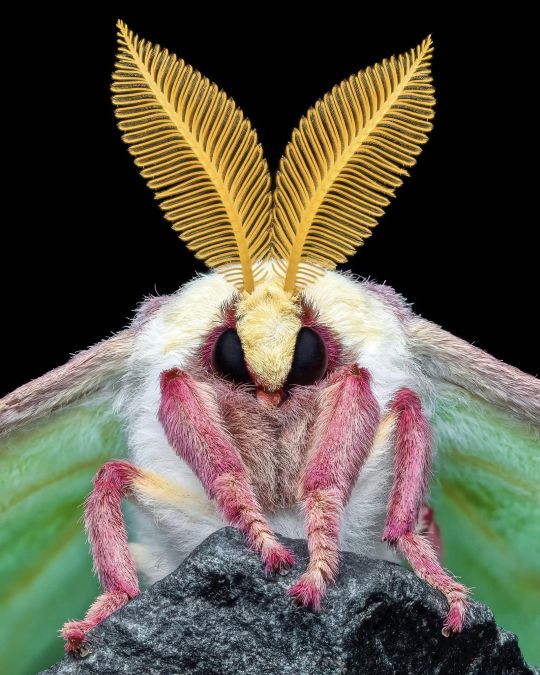
Luna Moth (Actias luna), male, family Saturniidae, eastern United States
photgraph by Benjamin Salb
3K notes
·
View notes
Text


I found my first Hemileuca moth this year, one of my favorite local moths.
#art#nature#california#bay area#mendocino#sonoma#moths#insects#bugs#entomology#Hemileuca#saturniidae
3K notes
·
View notes
Photo
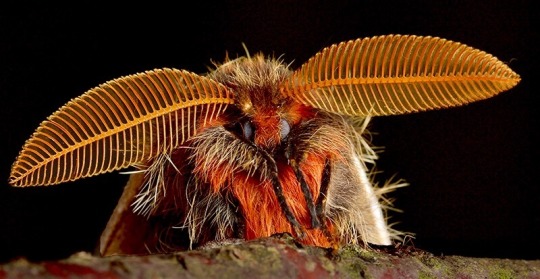
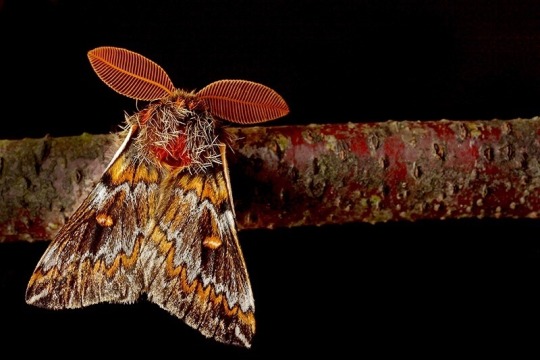




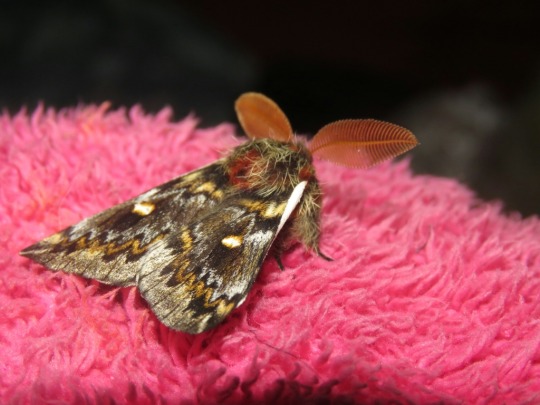

Male Chilean silkmoths, Ormiscodes schmidtnielseni, Saturniidae
Female:
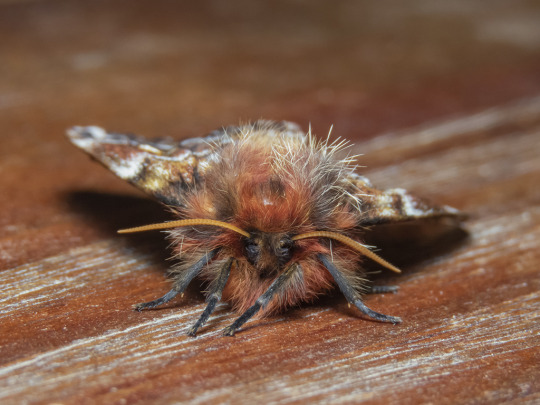


Photos 1-4 by josebesa, 4-5 by ieremiel, 6-7 by yerkolloncon, and 8-10 by ieremiel
#animals#curators on tumblr#insects#bugs#moth#saturniidae#chilean silkmoth#Ormiscodes schmidtnielseni#one nice bug#can you believe those antennae#silly
2K notes
·
View notes
Text
a mess of mature promethea moth caterpillars (Callosamia promethea) wriggling plumply after spending a little less than a month fattening up on wild cherry leaves
a smaller relative of the cecropia moth, these are one of the less well-known giant silkmoths in the US, but they might just be my favorite species to raise.
(Massachusetts, 8/20/23)
#moths#saturniidae#callosamia promethea#promethea moth#bugs#bugblr#insects#entomology#lepidoptera#caterpillars
4K notes
·
View notes
Text
Moth Of The Day #249
Ghostly Silkmoth
Ceranchia apollina
From the saturniidae family. They can be found in Madagascar.
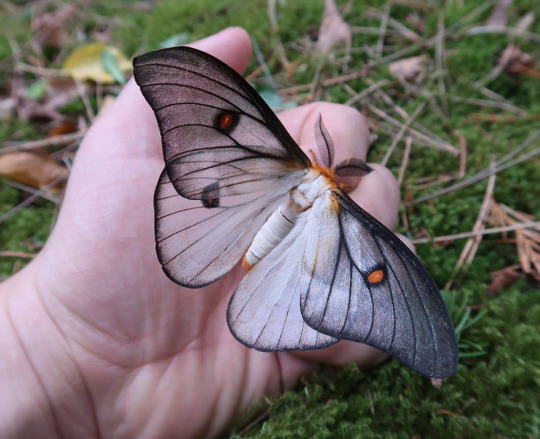

Image sources: [1] [2]
#moth#moths#lepidopterology#lepidoptera#nature#pretty moth#bugs#insect#moth of the day#motd#lepiodoptery#entomology#bugblr#insects#invertebrates#ghostly silkmoth#ceranchia apollina#saturniidae moth#saturniid#saturniidae
3K notes
·
View notes
Photo
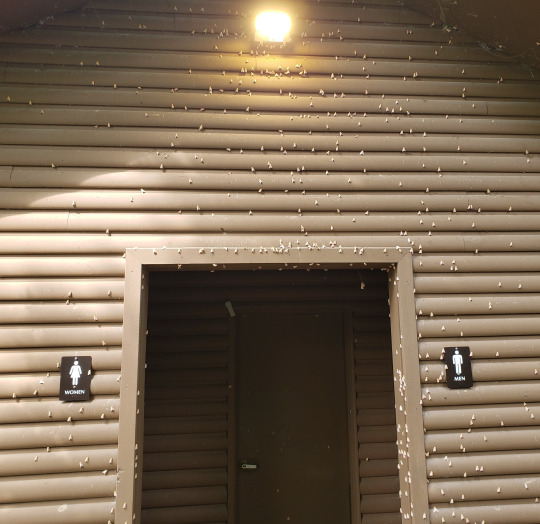


Hundreds of Rosy Maple Moths gather on the public restrooms at Voyageurs National Park in Minnesota, USA.
photographs by J. Martin | National Park Service
1K notes
·
View notes
Photo
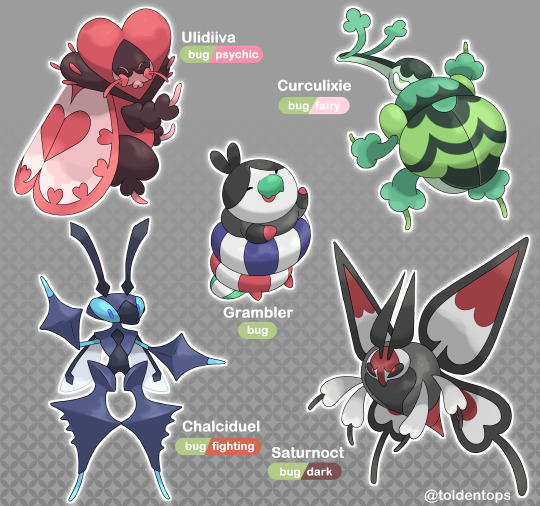
Lately, I’ve been hard at work building my own fakedex and feel bad having nothing to show for it. Here’s a 4-way split evolution family, each evo is based on a card suit and an insect order that have larvae! Visually inspired by particular families as well :]
#hopefully when I finish redesigning all my old mons I can post them! I've been on this kick for weeks#pokemon#fakemon#fake pokemon#fakemon design#creature design#bugs#insects#super duper happy with how these guys came out!!#my art#alker region#yes of course I made them bugs....how could I resist......#love how these just so happen to be the 4 largest order of insects i think(?)#hymenoptera#lepidoptera#coleoptera#diptera#chalcicidae#saturniidae#ulidiidae#curculionidae#the names are super unsubtle#anyways ENJOY!! hopefully I can do more of these low effort kind of teasers until I figure out a nice format to post these guys in#like with pokedex information and everything#stats galore yippee!!#bogleech
7K notes
·
View notes
Text
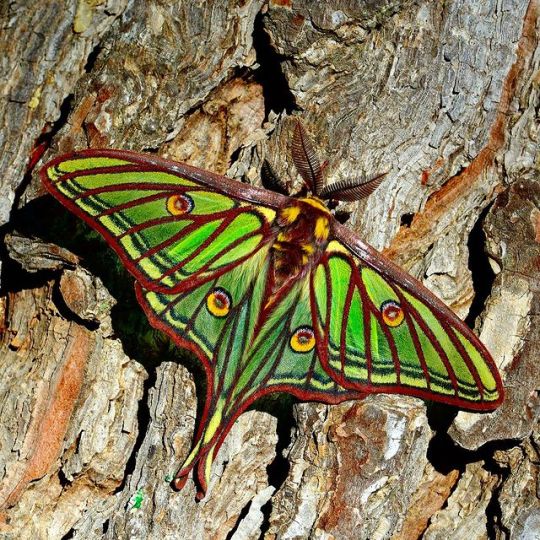
Spanish Moon Moth
#spanish moon moth#moth#Graellsia isabellae#Insecta#lepidoptera#saturniidae#saturniini#graellsia#upl
322 notes
·
View notes
Text
this is so emotional, I had to share ❤️
follow Talalovesyou on Tiktok!
#bugs#bugblr#insects#insect#bug#entomology#found elsewhere and uploaded by me#tiktok#moth#lepidoptera#insect rearing#saturniidae
515 notes
·
View notes
Text
Moth of the Week
Spanish Moon Moth
Graellsia isabellae
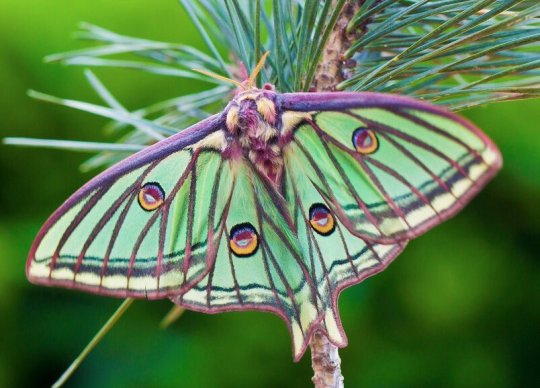
The Spanish moon moth was first described in 1849 by Mariano de la Paz Graells y de la Agüera as Actias isabellae. However it was moved to the genus Graellsia, which was created in 1896 by Augustus Radcliffe Grote. It is part of the moth family Saturniidae and often associated with other “moon moths” under Actias although this species split off years ago. It is the only species in Graellsia and has no subspecies, making it a monotypic genus.
Description This moth has green wings with reddish-brown lines and yellow-green hindwing tails. These lines border all four wings and trace over the moth’s veins. The lower edges of both the hindwings and forewings (called the outer margins) are lined with black and the same yellow-green as the tails. This yellow-green is also seen on the forewings close by the moth’s head and on the hindwings in a gradient. Each wing has a magenta, orange, white, and black eyespot in between its veins with the hindwing spots being larger.
The body is yellow-green as well with reddish brown patterning. The antennae can be dark or orangish-brown.
The males have longer tails and bushier antennae while females have stubby tails and larger bodies.
Wingspan Range: 6.35 – 10.16 cm (2.5 - 4 in)
Diet and Habitat The caterpillar of this species eats pine needles, specifically from the Pinus nigra (Austrian Pine) and Pinus sylvestris (Scots Pine), which are native to its habitat. Interestingly, this species doesn’t easlily adapt to eating non-native pine species even if they are from the same genus.
This species is native to Spain and France but is also found in Switzerland. They live in the Alps and the Pyrenees mountains, which are considered a “refugee location.” Due to the cool, dry, and unchanging climate the Spanish moon moth has been able to remain unchanged for thousands of years. It is also a protected species.
Mating Adult moths hatch at the end of April to early May. The females lays 100 to 159 eggs, using pines as host plants. The eggs hatch after 1 to 1.5 weeks. It is important to note that adult from the same family will not mate with each other.
Predators Presumably, this moth uses its eyespots to imitate a larger animal and scare away predators.
Fun Fact A hybrid moth species was created by breeding the Spanish moon moth and the Indian moon moth (Actias Selene).
(Source: Wikipedia, Moth Identification, The Butterfly Babe)
#libraryofmoths#animals#bugs#facts#insects#moth#mothoftheweek#lepidoptera#Saturniidae#spanish moon moth#Graellsia isabellae
413 notes
·
View notes
Text
As @onenicebugperday is not currently accepting submissions, here is a moth friend I found at work.
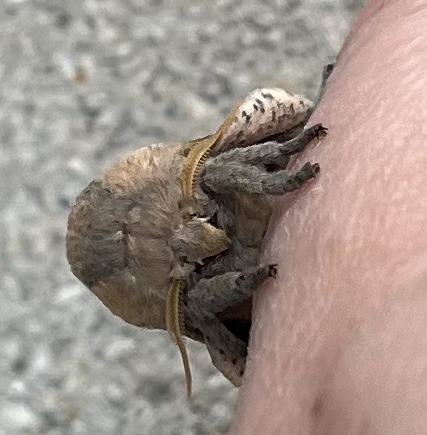
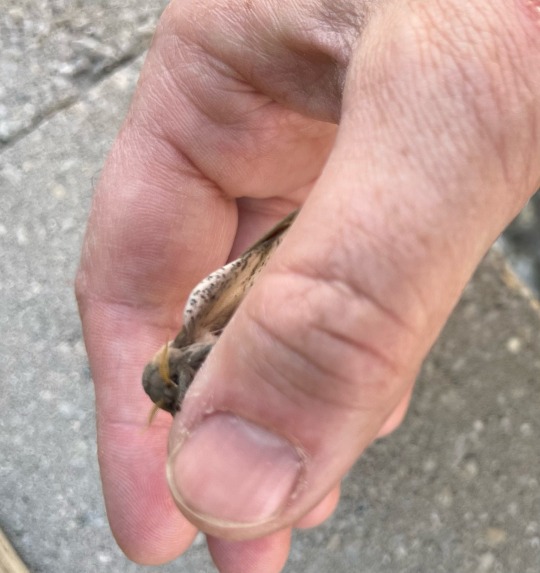
They (I think they are a ‘she,’ but I’m not sure) was trying to sleep in a very bright spot that gets way too hot come midday.
I moved our friend to a more sheltered spot.
I’m pretty sure they’re in the family Saturniidae. I don’t know which species. Their secondary wings were a beautiful shade of sunset pink, but they weren’t interested in showing them off aside from annoyed fluttering.
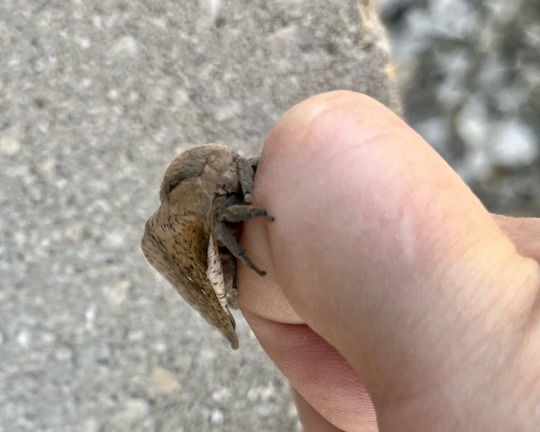
Covering their little face 🥺🩷
Here is a video of them tucking their face, and those big eyes!, into their fluff. Sorry for the blurry quality at some parts.
492 notes
·
View notes
Text

Polyphemus Moth (Antheraea polyphemus), male, family Saturniidae, eastern United States
photgraph by Benjamin Salb
1K notes
·
View notes
Text
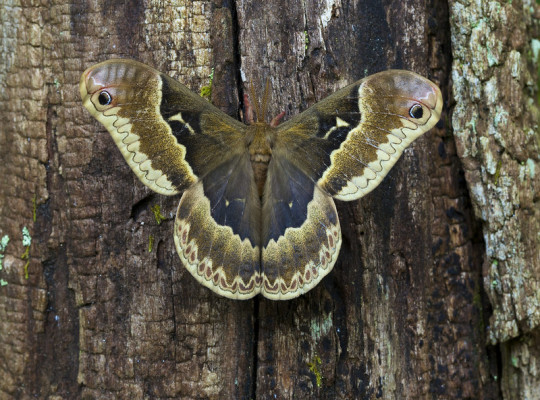
A tuliptree silkmoth (Callosamia angulifera) in North Carolina, USA
by Jim Petranka
#tuliptree silkmoth#butterflies and moths#callosamia angulifera#callosamia#saturniidae#lepidoptera#insecta#arthropoda#wildlife: north carolia#wildlife: usa#wildlife: north america
281 notes
·
View notes
Photo

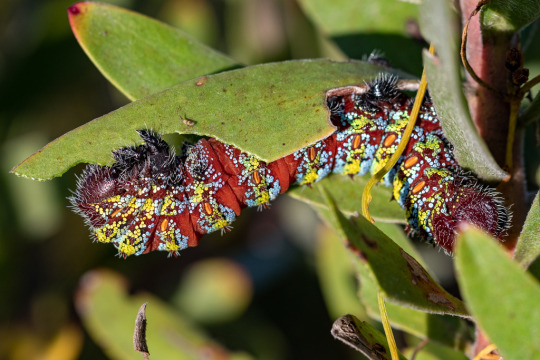
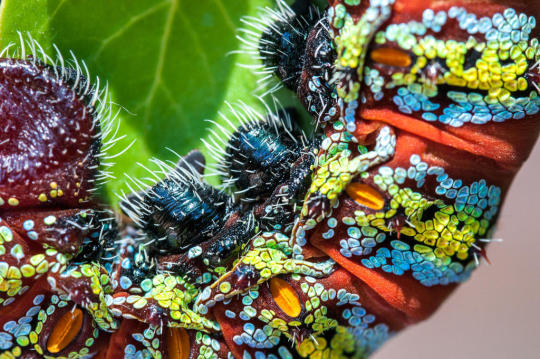
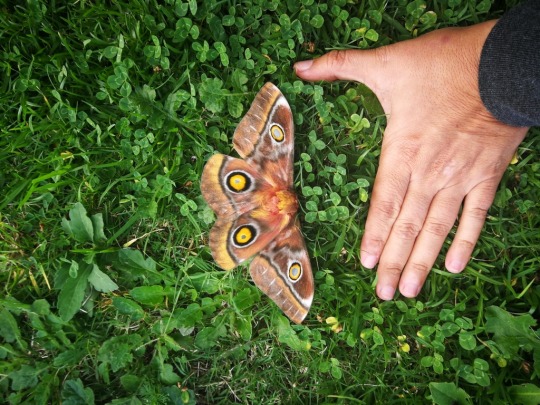
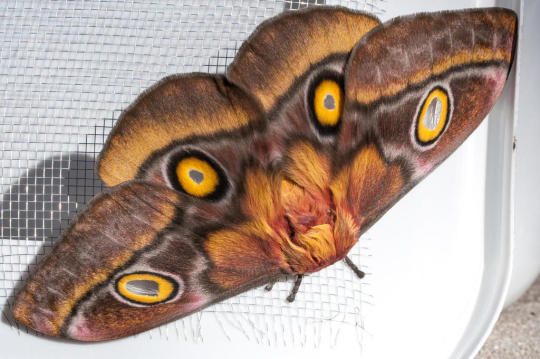
Pine emperor, Nudaurelia cytherea, Saturniidae
Found in southern Africa
Photos 1-3 and 5 by magrietb and photo 4 by meldem
#animals#curators on tumblr#insects#bugs#moth#caterpillar#larva#saturniidae#pine emperor#pine emperor moth#one nice bug
2K notes
·
View notes
Text
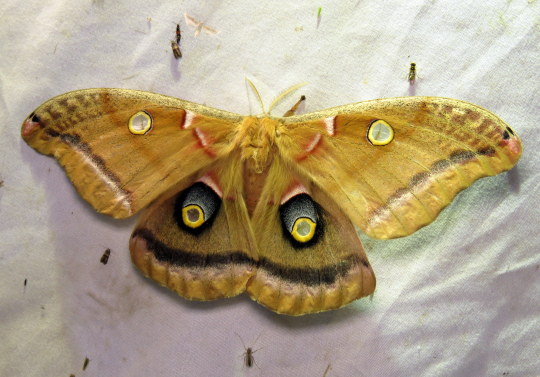
Bug of the Day
I remember this night. This night was a good night.
(Polyphemus moth, Antheraea polyphemus - there are at least 4 insect orders in this photo, can you spot them all?)
#Polyphemus moth#Polyphemus#Antheraea polyphemus#Antheraea#Saturniidae#Lepidoptera#moth#insect#BotD#bug of the day
219 notes
·
View notes